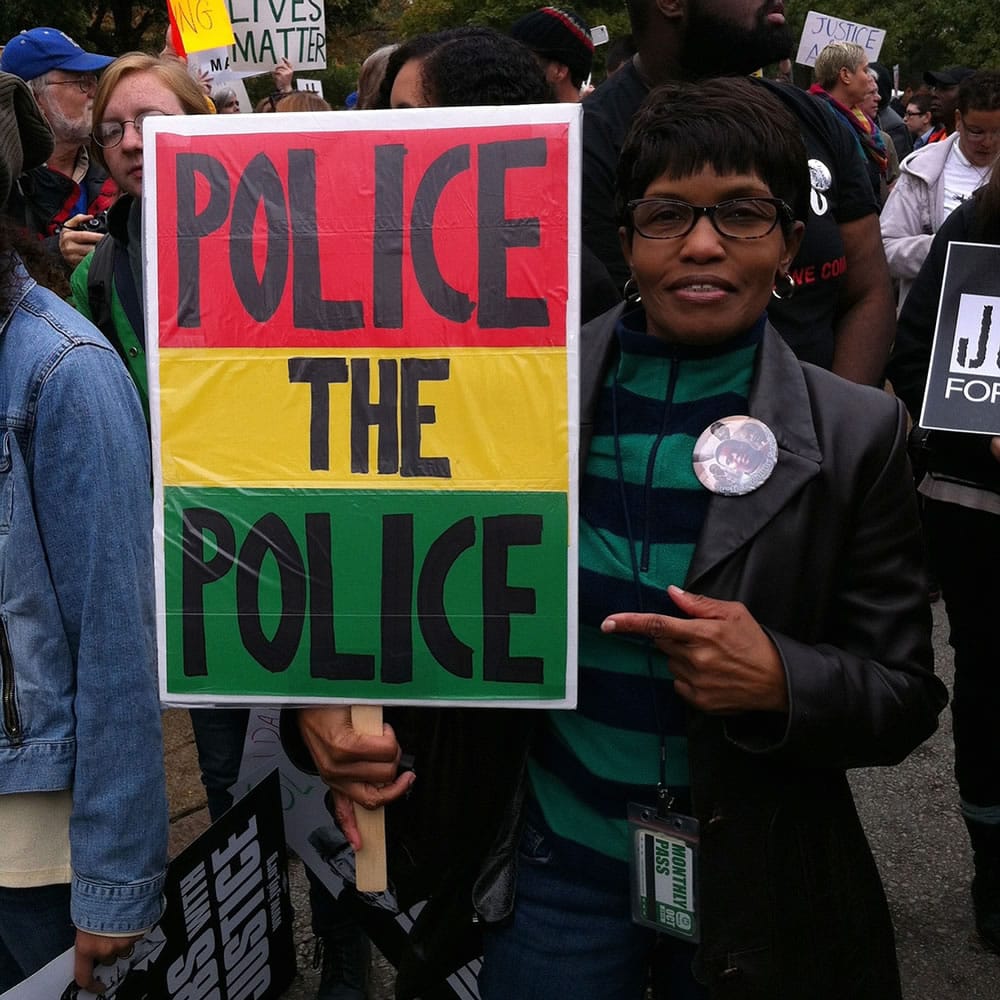WASHINGTON — The Newseum is becoming a breaking news-eum this month as it prepares to exhibit artifacts from the protests and news coverage in Ferguson, Mo., while that story continues to unfold.
Sharon Shahid, the Newseum’s online managing editor — call her a deadline curator — was on the ground in the simmering St. Louis suburb shortly before the announcement last week that the grand jury would not indict officer Darren Wilson in the fatal shooting of Michael Brown on Aug. 9.
Shahid collected a press pass and two rubber pellet balls from a police stun grenade donated by Stephanie Lecci, a newscast producer for St. Louis Public Radio. The pellets date to the night of Aug. 17, when police used tear gas to break up huge crowds. Lecci’s colleague at the station, Nancy Fowler, gave Shahid her notebook, where she scribbled “31 arrests” and “reports of gunfire.”
Shahid spoke to David Carson, photographer for the St. Louis Post-Dispatch, who made photos of people looting a convenience store during the first wave of intense protests days after Brown was killed. He fell to the ground in a scuffle with a man in a group near the store who objected to him taking pictures. Shahid collected Carson’s notebook and torn jeans.
“Those will be very good artifacts to have to show the risks journalists take in covering a story like this,” Shahid said.
Shahid also received from peaceful protesters a T-shirt with the slogan “Hands Up, Don’t Shoot” and a poster that says “Police the Police.” Beverly Adams, 63, of University City, Mo., carried that poster during the “Ferguson October” demonstration.
The items will go on display later in December in the Newseum’s Bloomberg Internet, TV and Radio Gallery.
“This is exactly what the Newseum stands for, helping people understand their First Amendment freedoms,” Shahid said, noting that the Ferguson story touches most elements of the amendment: freedom of speech and of the press, and the rights to peacefully assemble and petition the government for redress of grievances.
After the grand jury decision, the Newseum created a “feedback wall” where visitors could vote on whether news coverage of events in Ferguson has been fair and accurate. In the first week, the majority voted “No.”
This is not the first time the Newseum has mounted exhibits or programs ripped from the headlines, according to spokesman Jonathan Thompson. Following the beheading of two journalists in Syria, in September the Newseum held a program on the dangers of reporting from conflict zones.
For Shahid, a St. Louis native, her work in the field in Ferguson was also a homecoming. Her mother lives in a nearby suburb and does much of her shopping in Ferguson. Last summer, during a visit home, Shahid was driving with her mother past police headquarters in the quaint downtown.
“You know,” Shahid recalls saying to her mother, “you never hear of anything bad happening in Ferguson.”



